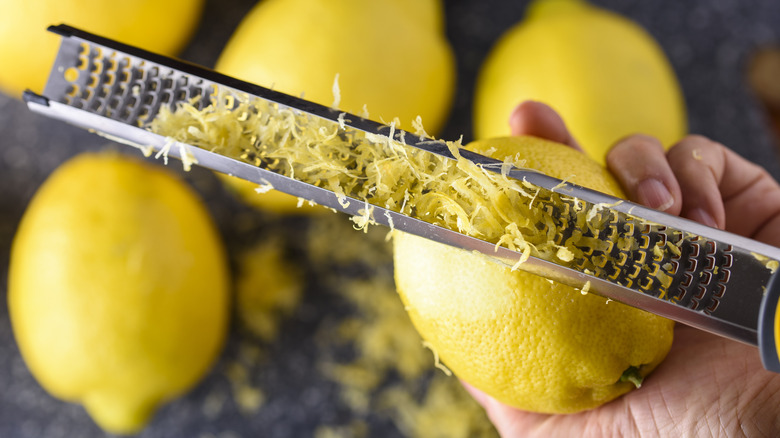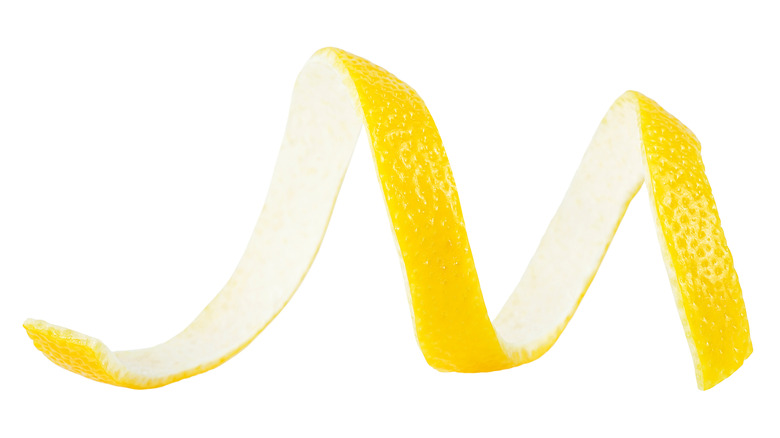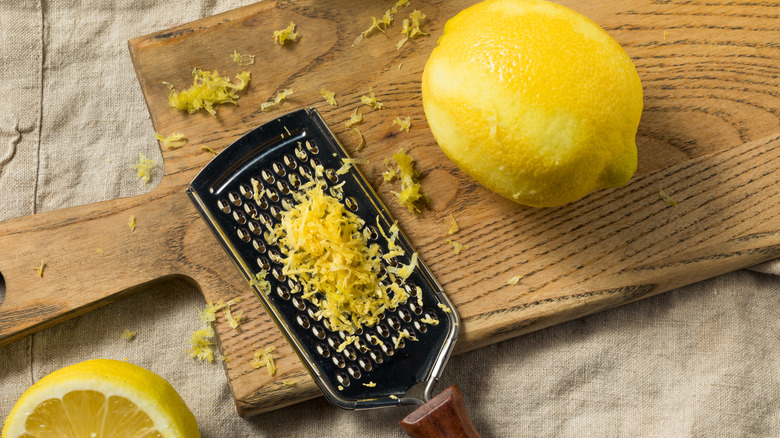Lemon Zest Actually Comes In Many Shapes And Sizes
If you are baking or cooking and you find that your recipe calls for lemon, you may be tempted to use lemon juice, but you can often get better results with lemon zest. Lemon zest refers to the outermost layer of the lemon peel, which is the brightly colored part that contains the citrus flavor of the fruit. Lemon zest is a potent, concentrated lemon flavor that adds a vibrant citrus aroma and tangy taste to various dishes and beverages.
Many people think that zest has to be finely grated, but there are actually many forms of lemon zest, and each can be used in different ways. There are also a few techniques and tools for zesting lemons. For example, you can use a fine grater, a zester, a microplane, or a vegetable peeler, which will give you different sizes of zest. The only hard rule for lemon zest is to avoid grating the pith, the bitter white taste under the peel.
The different types of zest and how to get them
Fine zest, also called mini zest, is finely grated or minced lemon zest that consists of tiny, delicate shreds of lemon peel. You can get this type of lemon zest by using a cheese grater. It blends well into batters, doughs, and sauces, distributing the lemon essence more evenly. Wide zest refers to larger strips or ribbons of lemon peel. This zest is typically obtained by using a vegetable peeler, and it is used for decorative purposes or when a stronger lemon flavor is desired.
If you want a curled zest for lemon curd, decorating lemon pie, or infusing syrups or other liquids, you should use a microplane. Rather than grating the peel, you rub the microplane along the lemon in a swooping motion to get the curls. For wider, more twisted zest, use a channel knife to peel the lemon (like you would a potato), avoiding the pith. This will give you long, semi-wide strips of lemon zest that have a perfect twist. You can use them to garnish drinks or to make a sweet and tart treat by candying the peel.
Storing lemon zest
If you want to have lemon zest on-hand for future use, you can zest the lemon and store it. Place it in an airtight container or a resealable plastic bag and store it in the refrigerator to preserve its freshness. Lemon zest can usually be refrigerated for up to one week. It can also be frozen to extend its shelf life. Spread the zest in a thin, even layer on a parchment-lined baking sheet and place it in the freezer. Once frozen, transfer it to a freezer-safe container, removing as much air as possible. Frozen lemon zest can be stored for several months.
You can also dehydrate lemon zest in a dehydrator or oven. With both options, set the appliance on the lowest temperature. Let the lemon peel cook for about two hours or until it is dry and crisp. The zest should be dry and brittle to the touch. Once it cools, grind the peel and store it. Keep in mind that stored lemon zest may lose some potency over time, so you should taste it and adjust the amount you use before adding it to your dishes or drinks.


